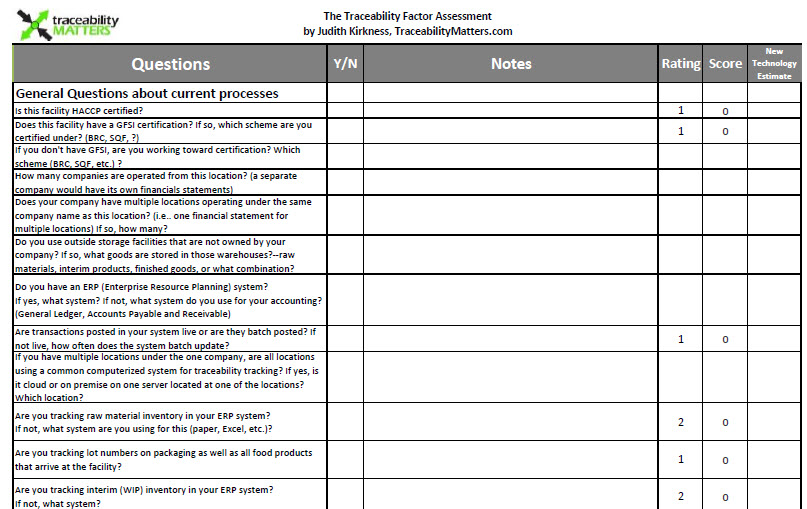
Traceability Audit scores are not like school grades, where you can pat yourself on the back for achieving 80%. If you only know where 80% of your finished product went or can only find 80% of the interim or finished goods produced by a given raw material, your customers won’t be giving you a gold star.
What happens if you can’t account for 100% of a lot of raw ingredient or finished good? Typically, the scope of your recall will be widened. If your supplier notifies you of a recall on a raw material, they’ll let you know the lot number(s) and when they shipped the affected product to you. From there, you’ll need to determine if you have any of that lot remaining in stock and immediately put it on hold. Then, you’ll need to look at any batches produced from that lot and put on hold any interim or finished products still in stock that contain the problem ingredient. Finally, you’ll need to identify all the customers who received any of the resulting finished goods, so you can recall those products from market.
If the raw ingredient was a product such as salt or a spice, where it takes you multiple days to fully consume a given lot, your recall will equally extend to multiple days of your production. If you can’t figure out exactly where it was used, you could find yourself recalling every product that ingredient went into from the date it arrived at your door to the present. That could be disastrous to your bottom line and your brand reputation.
Accounting for the use of an ingredient means you know how much made it into recipes and if any was spilled or disposed of for each lot of raw material received. Knowing when you started a new lot, especially if a given batch contains multiple lots of the ingredient is important, as you can’t rely solely on recipe quantities and FIFO (first in first out) depletion. Let’s face it, you’ll never get exactly 10L of molasses out of a 10L container, because some will remain in the container. As long as you know where all the molasses you did get from that container went, you’ve accounted for 100% of its use.
Depending on how many ingredients your recipes contain and how many steps your production process has, the volume of data you need to track can quickly become overwhelming. Technology can help you capture that information accurately and offer additional business benefits beyond recall reporting.
Traceability technology options such as barcode scanning and EDI (Electronic Data Interchange—a form of file exchanging that can be used to communicate lot information up and down your supply chain) are available even to small businesses. But choosing the right system for your business can be confusing, especially if you are currently using a paper based system.
To help you compare options, I developed a quick and easy Excel based traceability assessment questionnaire. Food manufacturers can use this tool to rank their existing systems (even the paper based ones) resulting in a starting score out of 100. Then, you can examine each technology option you are considering for how implementing it would increase your score, giving you verified traceability and hopefully additional business benefits beyond just recall reporting. Also included is an ROI calculator (return on investment) to help you predict the monetary savings and payback period you can look forward to from each technology option being reviewed. I encourage my clients to use this tool again after implementing new technology, to determine if you achieved or exceeded the expected benefits.
Understanding your options and how those options stack up against each other can help you build a business case to justify the cost of adding technology to your traceability process. Click the link below to view and download the Traceability Factor Assessment Tool. Assessment results can be used to support applications to government traceability grant programs.
FIC Traceability Factor Assessment 2015
If you have any questions about traceability or the assessment tool, feel free to contact me at judith@traceabilitymatters.com
Print this page
